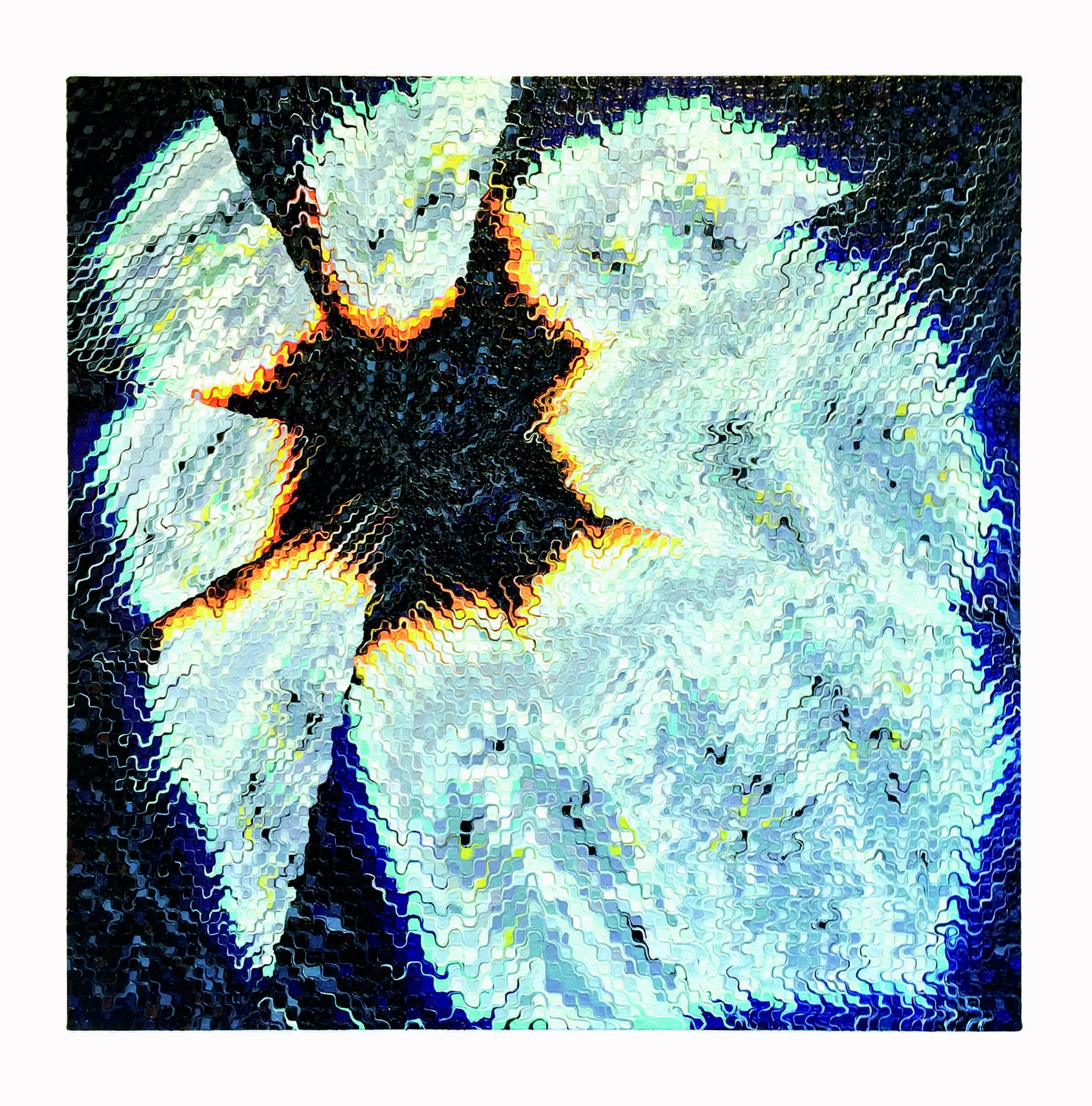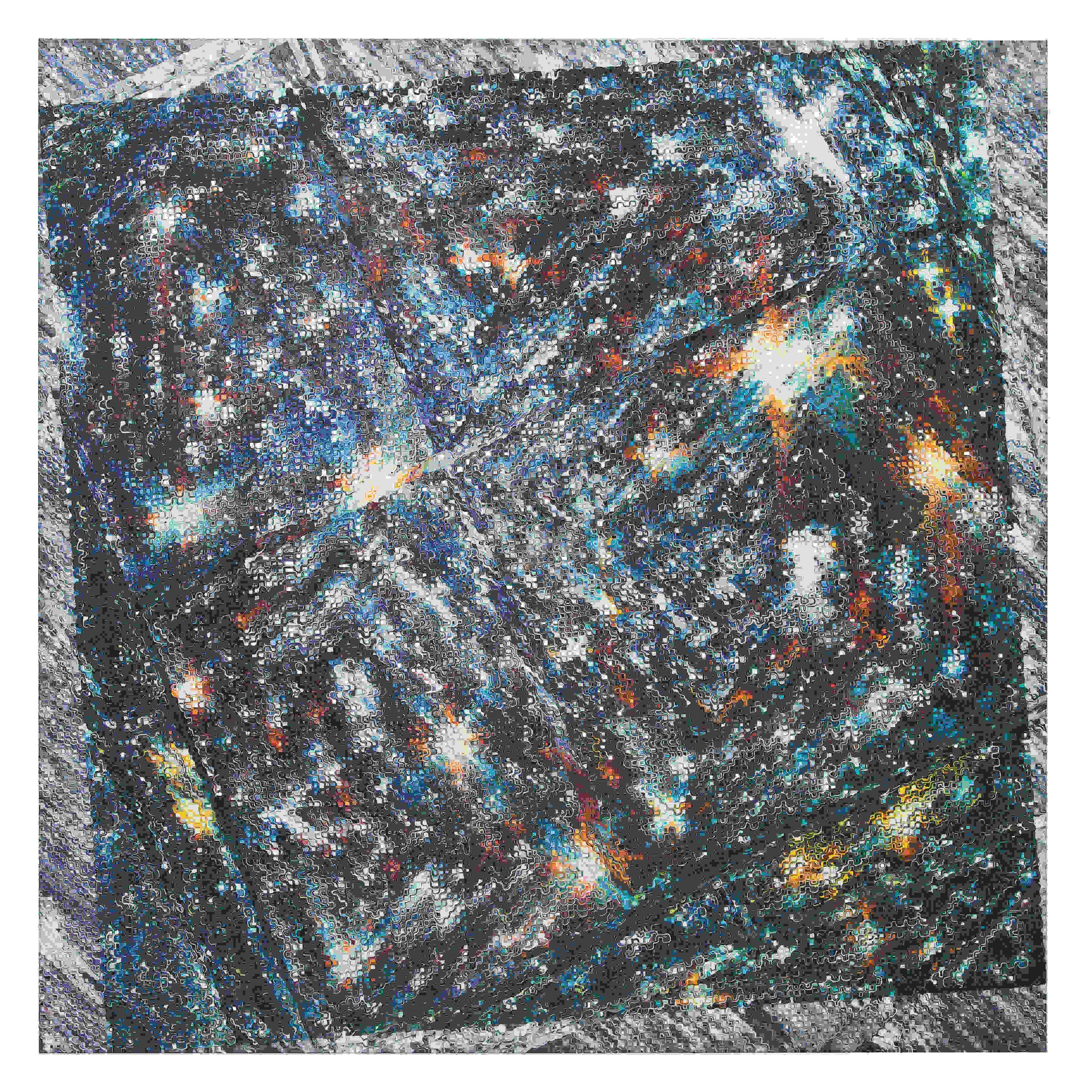Lucy Lord Campana
Bio: Lucy Lord Campana is an artist whose observational based painting practice explores the limits of our collective vision. Recent projects include images from the Hubble Space Telescope, a series around X-ray use in diamond mining, and methane detection with infrared technology. Campana holds a BFA in painting from the Rhode Island School of Design and an MFA in visual art from Columbia University. She lives and works in Brooklyn, NY.
Thesis Exhibition


Artist Statement: We can see farther than ever before. The edges of our collective vision are not limited to our own eyes, but rather to images that are presented to us through many layers of subjectivity. Culture is infused into each layer, determining what we choose to see and the visual language to communicate it. Painting weaves these layers together, frozen gestures lay side by side, creating a representation of what we observe.
In a kindergarten alphabet book, for the letter N, six year old Lucy wrote, “Ther WZZ noWN NI the Ske.”
Women’s Work: The First 20,000 Years by Elizabeth Wayland Barber (p. 23):
“Far from being unhappy at my mistake, I was delighted. Most fragments of prehis- toric cloth...are torn on all four edges, so it is not possible to tell which direction they were woven the way one usually does, simply by looking for the type of closed edges found only at the sides. But by trying to imitate the product, I discovered not only which way this shred was woven and some criteria for analyzing other pieces but also several interesting details about how...weavers worked.... It was another lesson to me that the process of recreating ancient artifacts step by step can shed light on the lives and habits of the original craftworkers that no amount of armchair theorizing can give.”
Walking Through Clear Water in a Pool Painted Black by Cookie Mueller (p. 85):
“After these trips we came back in and looked around like maniacs. We looked at the walls. All the paintings were hanging there waiting. We went into instant art panic. It was getting dangerously late to be in the house, the roof was about to fall.
‘THIS ARTIST IS MORE FAMOUS!’ Howard yanked a painting off the wall.
‘BUT THIS ONE’S WORTH MORE!’ I grabbed another. We hadn’t much time.
‘NO TAKE THIS ONE! IT’S OLDER!’ Howard pulled one down.
‘BUT LOOK AT THESE BRUSHSTROKES.’
‘NO! THIS ONE.’
‘GIMME THEM ALL. I’LL CARRY THEM ALL!’”
Venusia by Mark von Schlegell (p. 90):
“Ae believed she was fighting to halt the destruction and contamination of Earth. Sadly, poetry does not save worlds. Ae and her comrades were too late to do anything but hasten their own deaths. Their paradise was only of the mind. Still, it allowed them to envision humanity’s survival off-world. She wrote of a colony divorced from a home to which it could never return.... All stories from Earth are sad. All its dreams are fantasies, all its insurrections failures. We must not get caught up with them.”
L to R: Lesedi La Rona (30″ × 30″, Oil on canvas, 2016); NGC 6496 (60″ × 60″, Oil on canvas, 2016)
